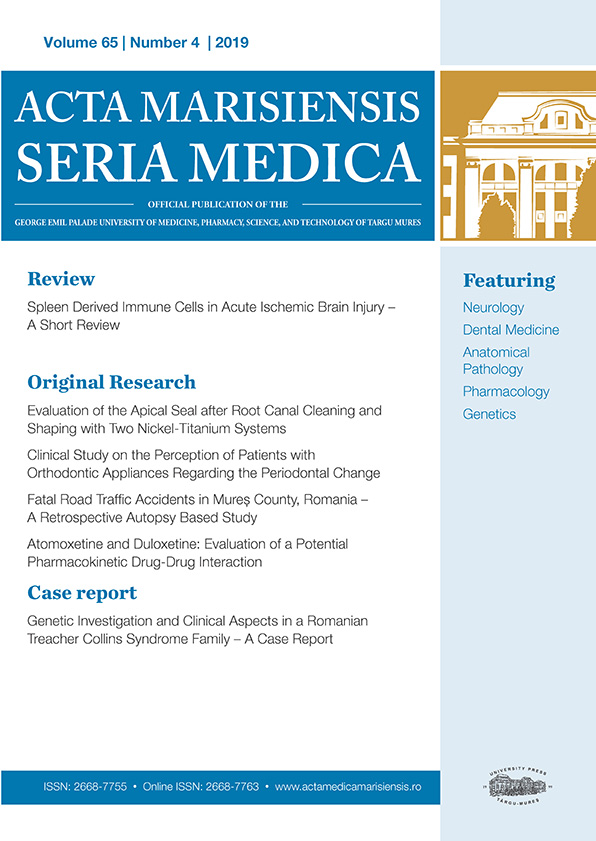Study of the anxiolytic effect of propranolol and dextromethorphan in mice using a model of psychogenic stress
Abstract
Objective: To find the anxiolytic effects in a psychogenic stress model in mice, the present study investigated the interaction between propranolol and dextromethorphan.
Methods: 50 Albino Swiss male mice were housed in groups of 10 per cage. The beta-adrenergic receptor blocker propranolol (20 mg/kg bw), the N-methyl-D-aspartate receptor dextromethorphan (30 mg/kg bw), and their combination were administered 10 minutes after exposure to predator odor. The treatments included diazepam as positive control and normal saline as negative control. Anxiety-like behaviors were evaluated using the elevated plus maze test (EPM) 7 days after stress induction.
Results: Regarding the length of stay (F=25.53; p<0.0001)/ number of entries in the open arms (F=3.533; p=0.0416), time (F=6.127; p=0.0045)/ number of entries in the closed arms (F=5.690; p=0.0141), time in center-point (F=3.577; p=0,0295), and total distance traveled (F= 4.711; p=0.0145), there was a significant difference among the treated groups. Propranolol and dextromethorphan treated groups expressed lower time in the closed arms vs Placebo (p=0.0089, respectively p=0.0111). In addition, the time spent in the open arms was higher in propranolol group vs placebo group (p=0.0215).
Conclusions: Considering obtained data, there was a decrease of symptoms in the sympathetic nervous system and the psychological stress disappeared in mice applying a treatment of 20 mg/kg bw propranolol. Our findings indicated that dextromethorphan, partially, mediated the anxiolytic-like activity. However, the combination of these two drugs did not express anxiolytic effects.
Copyright (c) 2021 Radion Garaz, Sorina Cucuiet, Gabriela Garaz-Pislariu, Raluca-Ioana Buliga

This work is licensed under a Creative Commons Attribution 4.0 International License.









